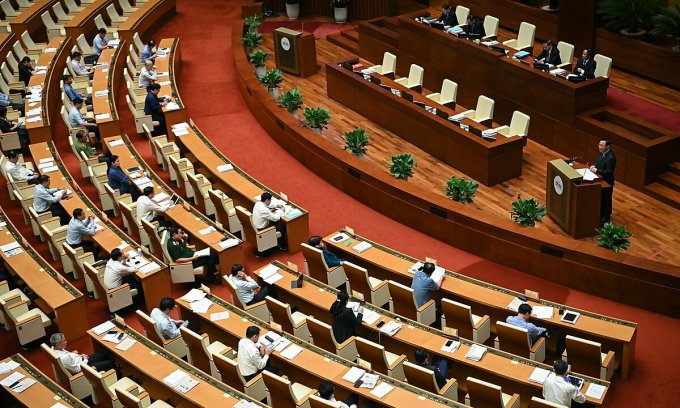What is the value-added tax rate for performing arts services in Vietnam?

Paying taxes is a citizen’s duty, so we need to understand the provisions of tax laws to avoid violations and penalties. So how does the law regulate value-added tax rates? What is the value-added tax rate for performing arts services? When is the time to determine the value-added tax for performing arts services? To clarify this, today, LSX Lawfirm will give you an article about “What is the value-added tax rate for performing arts services in Vietnam?“, as follows:
Legal grounds
- The Law on Value Added Tax 2008 was amended and supplemented in 2016
What is Value Added Tax?
Value added is the increase of a product, service, or product, which is caused by production, processing, trading, or service establishment, collectively known as a business establishment, on raw materials or goods, or services. acquisitions increase their value. In other words, this is the difference between the output price and the input price generated by the business establishment in the process of production or business. Or it is the added value of goods, products, and services developed in the process from production, from circulation to consumption.
Accordingly, the value-added tax is a tax levied on consumers of goods and services subject to value-added tax. Consumers are the payers, but taxpayers are businesses and organizations that sell goods and provide services by adding tax to the selling price that consumers have to pay when buying goods and services.
Value-added tax rates
According to Article 8 of the 2008 Law on Value Added Tax, which was amended and supplemented in 2016, the tax rates are as follows:
Tax rate 0%
The tax rate of 0% applies to exported goods and services, international transport, and goods and services not subject to value added tax specified in Article 5 of this Law upon export, except for the following cases: The following:
Technology transfer, transfer of intellectual property rights abroad.
- Outward reinsurance service;
– Credit granting services;
- Transfer of capital;
– Derivative financial services;
- Postal and telecommunications services;
- Exported products are specified in Clause 23, Article 5 of this Law.
Exported goods and services are goods and services that are consumed outside of Vietnam, in a non-tariff zone; goods and services are provided to foreign customers according to the Government’s regulations.
5% tax rate
The tax rate of 5% applies to the following goods and services:
- Clean water for production and daily life;
- Ore for fertilizer production; pesticides and growth stimulants for livestock and plants;
– Services of digging and embanking, dredging canals, ditches, ponds, and lakes in service of agricultural production; cultivating, caring for, and preventing pests and diseases for plants; preliminary processing and preservation of agricultural products;
- Unprocessed crop, livestock, and aquatic products, except for products specified in Clause 1, Article 5 of this Law;
– Preliminarily processed rubber latex; preliminarily processed turpentine; nets, ropes, and yarns for knitting fishing nets;
- Fresh food; unprocessed forest products, except timber, bamboo shoots, and products specified in Clause 1, Article 5 of this Law;
- Street; by-products in sugar production, including sugar molasses, bagasse, and sludge;
- Products made of jute, sedge, bamboo, leaves, straw, coconut shells, coconut skulls, water hyacinth, and other handicraft products made with raw materials used from agriculture; primary cotton; newsprint.
- Medical equipment, instruments, cotton, medical tampons; preventive and curative drugs; pharmaceutical chemical products, and herbal ingredients are raw materials for the production of curative and preventive drugs then;
- Teaching and learning materials, including models, drawings, boards, chalk, rulers, compasses, and specialized equipment and tools for teaching, research, and experiments science then;
– Cultural activities, exhibitions, physical training, and sports; performing arts, film production; import, distribution, and screening of films;
– Children’s toys; books of all kinds, except for books specified in Clause 15, Article 5 of this Law;
- Scientific and technological services according to the provisions of the Law on Science and Technology.
– Sale, lease, lease-purchase of social housing in accordance with the Law on Housing.
10% tax rate
The tax rate of 10% applies to goods and services not specified in Clauses 1 and 2 of this Article.
Thus, depending on each taxable object, the applied value-added tax rates are 0%, 5%, and 10%.
What is the value-added tax rate for performing arts services?
In Clause 2, Article 8 of the Law on Value Added Tax 2008, which was added in 2016, the tax rate of 5% applies to the following goods and services:
a) Clean water for production and daily life;
b) Ore for fertilizer production; pesticides and growth stimulants for livestock and plants;
d) Services of digging and embanking, dredging canals, ditches, ponds, and lakes in service of agricultural production; cultivating, caring for, and preventing pests and diseases for plants; preliminary processing and preservation of agricultural products then.
đ) Unprocessed crop, livestock, and aquatic products, except for products specified in Clause 1, Article 5 of this Law;
e) Preliminarily processed rubber latex; preliminarily processed turpentine; nets, ropes, and yarns for knitting fishing nets;
g) Fresh food; unprocessed forest products, except timber, bamboo shoots, and products specified in Clause 1, Article 5 of this Law;
In addition
h) Road; by-products in sugar production, including sugar molasses, bagasse, and sludge;
i) Products made of jute, sedge, bamboo, leaves, straw, coconut shells, coconut skulls, water hyacinth, and other handicraft products made with raw materials used from agriculture; primary cotton; newsprint;
l) Medical equipment, instruments, cotton, medical tampons; preventive and curative drugs; pharmaceutical chemical products, and herbal ingredients are raw materials for the production of curative and preventive drugs.
m) Teaching and learning materials, including models, drawings, boards, chalks, rulers, compasses, and other specialized equipment and tools for teaching, research, and experimentation. scientific experiment then;
n) Cultural activities, exhibitions, physical training, and sports; performing arts, film production; import, distribution, and screening of films then;
o) Children’s toys; books of all kinds, except for books specified in Clause 15, Article 5 of this Law;
p) Scientific and technological services according to the provisions of the Law on Science and Technology.
Thus, according to the above regulations, art performances will be subject to the value-added tax rate of 5%.
Time to determine value-added tax for performing arts services
The time to determine value-added tax for art performance services prescribed as follows:
“1. The time to determine the value-added tax on goods is the time when the ownership or the right to use the goods transferred to the buyer, regardless of whether money has collected or not.
- The time to determine value-added tax for services is the time when the service completed or the service provision invoice issued, regardless of whether money has collected or not.
- The Ministry of Finance shall provide specific guidance on the time of value-added tax determination for a number of special cases.”
Thus, the time to determine value-added tax for performing arts services is the time when the service completed or the service provision invoice issued.
Where do performing arts service businesses pay value-added tax?
According to regulations, enterprises providing art performance services shall pay value-added tax at one of the following locations:
(1) Taxpayers declare and pay value-added tax in the locality where they do business.
(2) Taxpayers who declare and pay value-added tax by the deduction method have a dependent cost-accounting production establishment located in a province or centrally run city that is different from the province or city where they headquartered. The head office must pay value-added tax in the locality where the production establishment is located and the locality where the head office is located then.
(3) In case an enterprise or cooperative applying the direct method has a production facility in another province or city where its head office is located or has temporary sales activities outside the province, the enterprise or cooperative declares and pays value added tax as a percentage of turnover for revenue generated outside the province in the locality where the production establishment or current sale is located. Enterprises and cooperatives are not required to pay value-added tax as a percentage of the turnover at the head office for the revenue generated outside the province which has declared and paid tax.
Consulting service of LSX Lawfirm
Above is LSX Lawfirm’s advice on the content of the problem “What is the value-added tax rate for performing arts services in Vietnam?”. And all the above knowledge to use in work and life. If you have any questions and need more advice and help, please contact the hotline for reception. Lawyer X is a place that provides reputable and fast business services at reasonable prices. Customers will be extremely satisfied when using our services.
- FB: www.facebook.com/luatsux
- Tiktok: https://www.tiktok.com/@luatsux
- Youtube: https://www.youtube.com/Luatsux
Contact LSX Lawfirm
Finally, hope this article is useful for you; answer the question: “What is the value-added tax rate for performing arts services in Vietnam?”. If you need more information, please contact LSX Law firm: at +84846175333 or Email: [email protected].
Related article
- Guidance on how to calculate residential land tax in Vietnam
- How is land inheritance tax in Vietnam calculated?
- What is the policy of the Vietnamese government on performing arts?
Related questions
According to the provisions of Article 2 of Circular 219/2013/TT-BTC stipulating that the objects subject to value-added tax are goods and services used for production, business, and consumption in Vietnam (including goods and services). goods and services purchased from overseas organizations and individuals), except for those not subject to value-added tax as guided in Article 4 of this Circular then.
Accordingly, to regulations, film production activities and film distribution activities in accordance with the provisions of the Law on Cinema (including the sale, rental, export, and import) are subject to a value-added tax rate of 5%.
Accordingly, to regulations, radio broadcasting is not subject to value-added tax. Therefore, there is no tax rate for radio broadcasting.
Conclusion: So the above is What is the value-added tax rate for performing arts services in Vietnam?. Hopefully with this article can help you in life, please always follow and read our good articles on the website: lsxlawfirm.com




